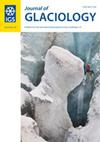利用分布式声学传感(DAS)推断冰川径流
IF 2.6
3区 地球科学
Q2 GEOGRAPHY, PHYSICAL
引用次数: 0
摘要
冰川融化和径流观测对于研究冰川及其与环境的相互作用具有重要意义。分布式声学传感(DAS)是一种利用光缆中的瑞利反向散射来测量高空间和时间分辨率地震-声学波场的传感技术,最近引起了广泛关注。在此,我们展示了 2020 年融化季节期间,在瑞士罗纳格莱彻进行的为期一个月、长达 9 公里的 DAS 部署所获得的数据。在测试几种机器学习(ML)模型的同时,我们利用 DAS 数据作为因变量,建立了一个回归问题,以推断在冰川溪流测量仪上观测到的冰川排放量。我们还比较了两个仅依赖气象站数据的预测模型。我们发现,可以利用 DAS 记录的地震-声波场来推断冰川的排泄量。使用 DAS 数据的模型优于根据气象数据训练的两个模型,其平均绝对误差分别为 0.64、2.25 和 2.72 m3 s-1。这项研究表明,原位冰川 DAS 能够用于量化冰川径流量,并为测量冰川径流量的新方法指明了方向。本文章由计算机程序翻译,如有差异,请以英文原文为准。
DAS to discharge: using distributed acoustic sensing (DAS) to infer glacier runoff
Observations of glacier melt and runoff are of fundamental interest in the study of glaciers and their interactions with their environment. Considerable recent interest has developed around distributed acoustic sensing (DAS), a sensing technique which utilizes Rayleigh backscatter in fiber optic cables to measure the seismo-acoustic wavefield in high spatial and temporal resolution. Here, we present data from a month-long, 9 km DAS deployment extending through the ablation and accumulation zones on Rhonegletscher, Switzerland, during the 2020 melt season. While testing several types of machine learning (ML) models, we establish a regression problem, using the DAS data as the dependent variable, to infer the glacier discharge observed at a proglacial stream gauge. We also compare two predictive models that only depend on meteorological station data. We find that the seismo-acoustic wavefield recorded by DAS can be utilized to infer proglacial discharge. Models using DAS data outperform the two models trained on meteorological data with mean absolute errors of 0.64, 2.25 and 2.72 m3 s−1 , respectively. This study demonstrates the ability of in situ glacier DAS to be used for quantifying proglacial discharge and points the way to a new approach to measuring glacier runoff.
求助全文
通过发布文献求助,成功后即可免费获取论文全文。
去求助
来源期刊

Journal of Glaciology
地学-地球科学综合
CiteScore
5.80
自引率
14.70%
发文量
101
审稿时长
6 months
期刊介绍:
Journal of Glaciology publishes original scientific articles and letters in any aspect of glaciology- the study of ice. Studies of natural, artificial, and extraterrestrial ice and snow, as well as interactions between ice, snow and the atmospheric, oceanic and subglacial environment are all eligible. They may be based on field work, remote sensing, laboratory investigations, theoretical analysis or numerical modelling, or may report on newly developed glaciological instruments. Subjects covered recently in the Journal have included palaeoclimatology and the chemistry of the atmosphere as revealed in ice cores; theoretical and applied physics and chemistry of ice; the dynamics of glaciers and ice sheets, and changes in their extent and mass under climatic forcing; glacier energy balances at all scales; glacial landforms, and glaciers as geomorphic agents; snow science in all its aspects; ice as a host for surface and subglacial ecosystems; sea ice, icebergs and lake ice; and avalanche dynamics and other glacial hazards to human activity. Studies of permafrost and of ice in the Earth’s atmosphere are also within the domain of the Journal, as are interdisciplinary applications to engineering, biological, and social sciences, and studies in the history of glaciology.
 求助内容:
求助内容: 应助结果提醒方式:
应助结果提醒方式:


